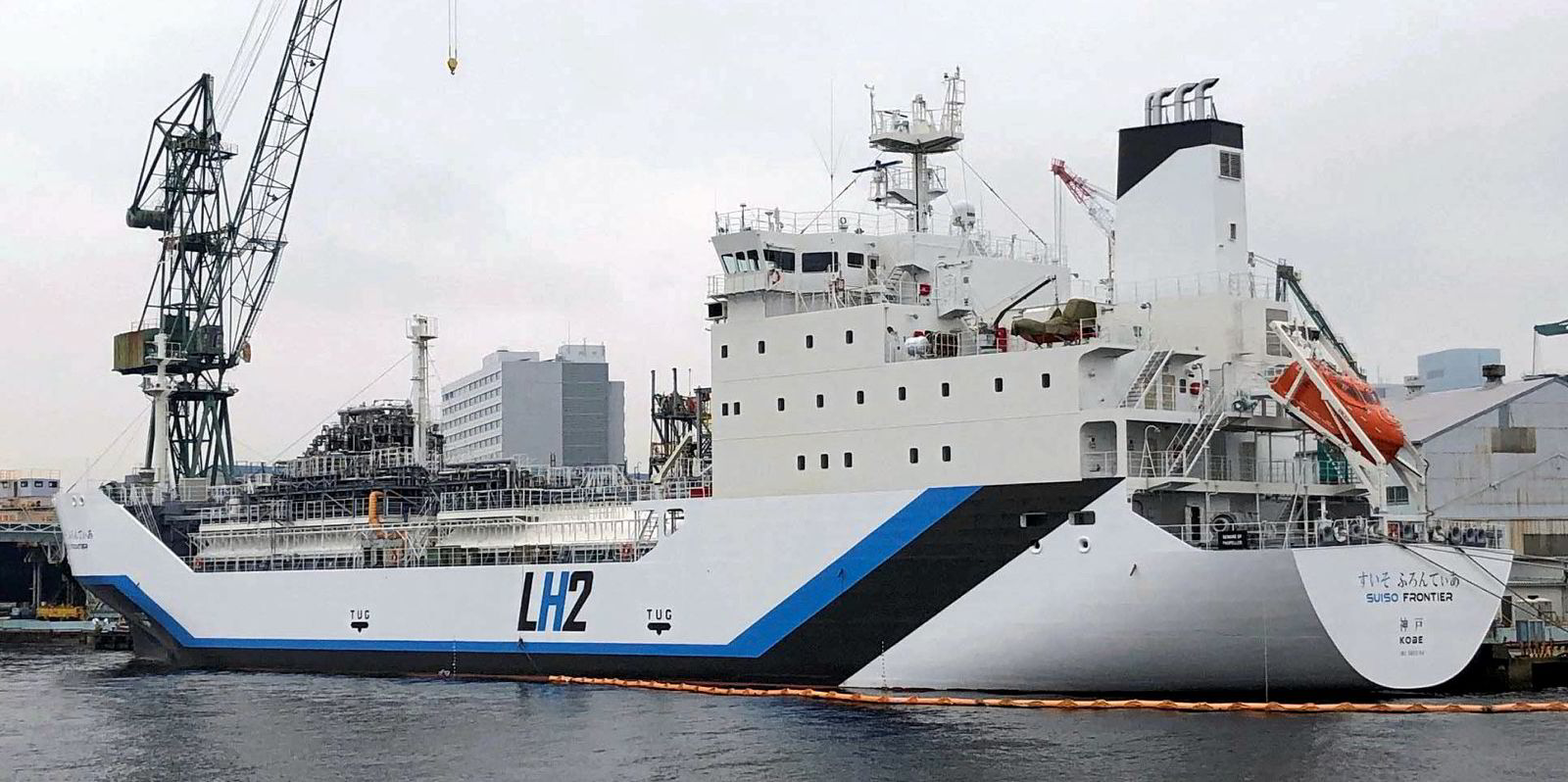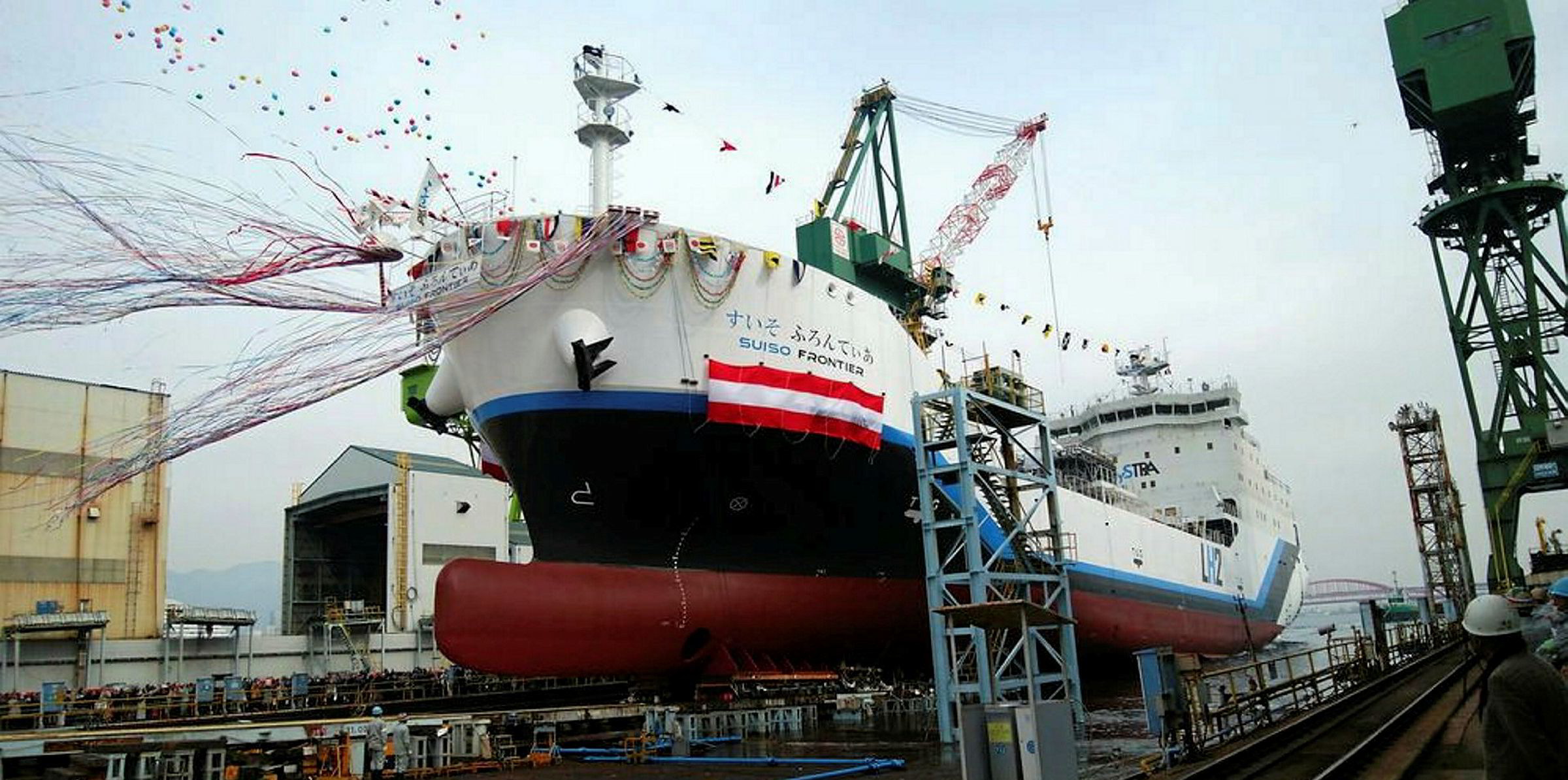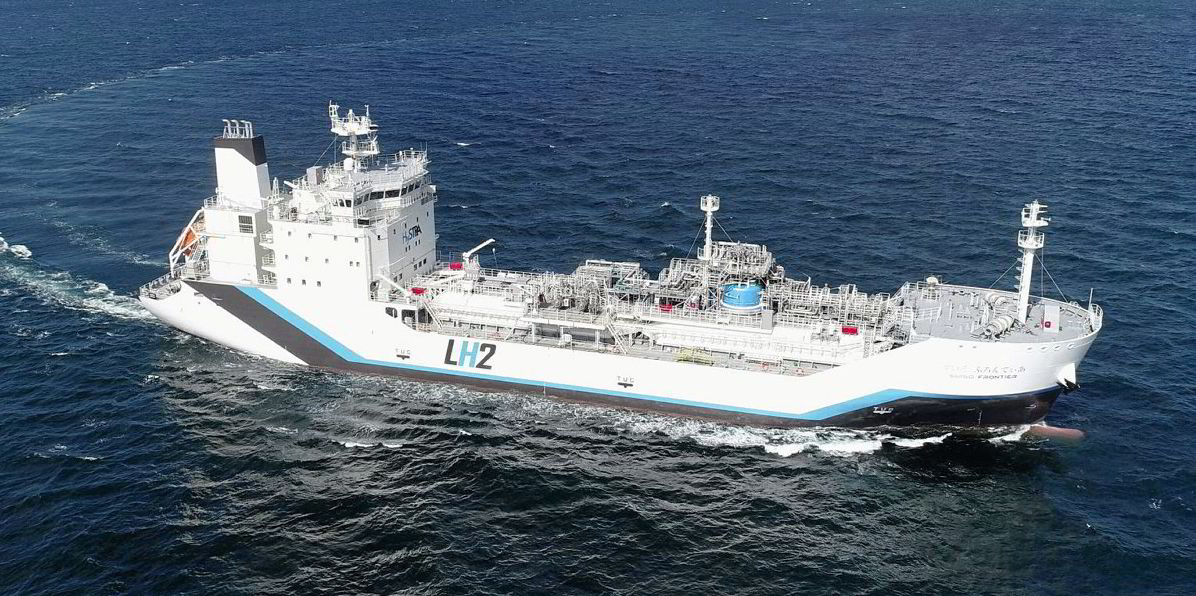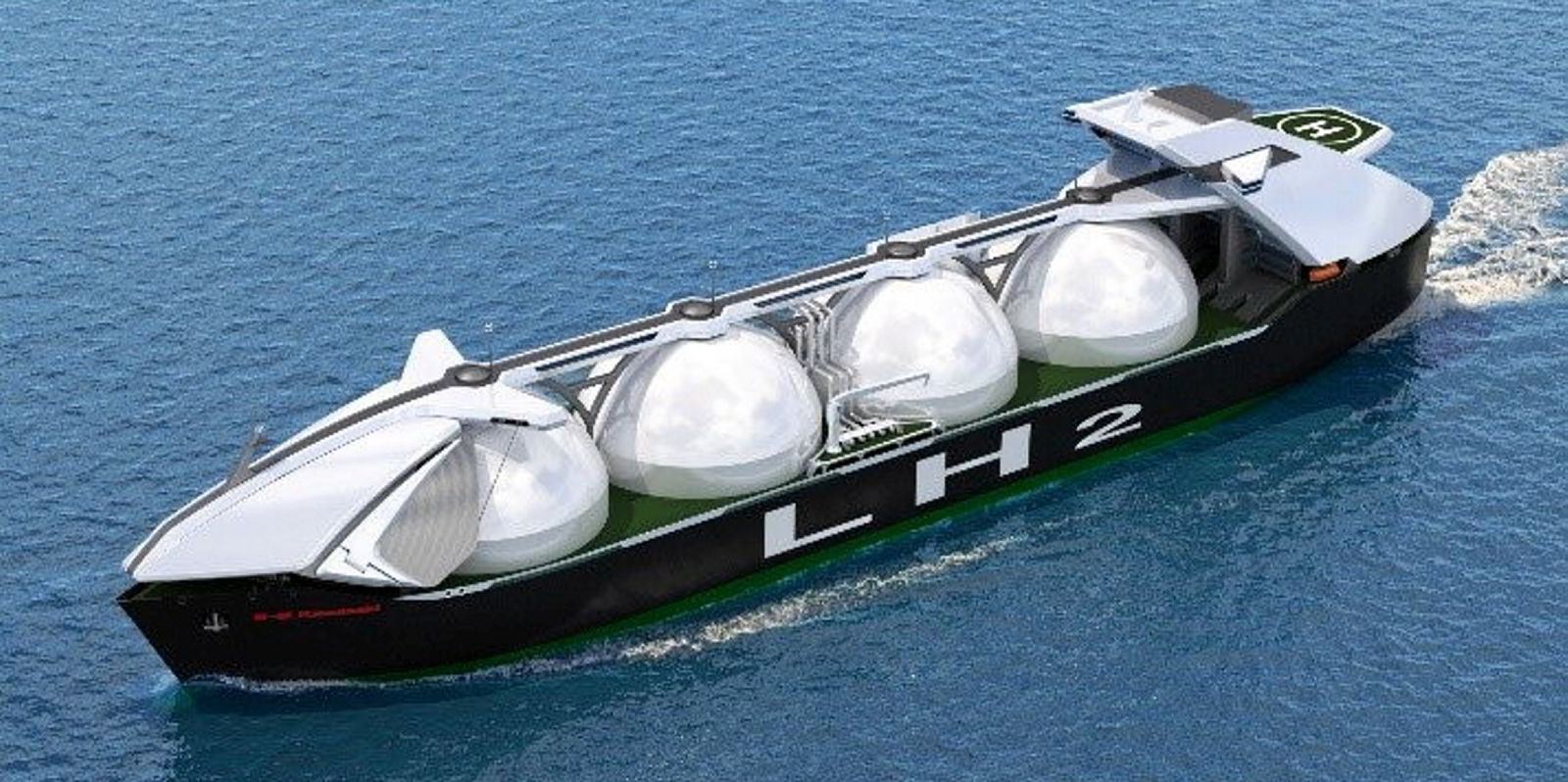A pioneering liquefied hydrogen carrier (LHC) is being readied to leave Japan on its maiden voyage to Australia to load its first cargo.
Reuters quoted a Kawasaki Heavy Industries (KHI) spokesperson as saying the 1,250-cbm Suiso Frontier, which is currently at the Kobe Airport hydrogen terminal, could leave Japan on the 9,000 km (5,592 mile) 16-day voyage to the port of Hastings in Australia later in December, depending on the pandemic.
After depressurising the single cargo tank at the quayside, the vessel — Suiso is Japanese for hydrogen — will be loaded with liquefied hydrogen (LH2) produced by brown coal gasification.
But a return date with a first shipment has yet to be set due to the emergence of the Omicron variant, he said.
The Hydrogen Energy Supply-Chain Technology Research Association (Hystra) — the operating body responsible for the production, handling and transport of hydrogen — has been instrumental in this first LHC ship.
KHI is leading the pilot project backed by the Japanese and Australian governments.
Hydrogen production started in Australia in March 2021.
The ship, which was finally launched in December 2019 at KHI, has taken longer than expected to complete.
At one point the expectation was to use it to ship in hydrogen in time of the Tokyo Olympics that would be used to fuel local taxis. But these plans were pushed back and then the vessel's construction was delayed by the pandemic.
In September 2020, Hystra said the vessel would ship its first cargo from Australia in 2021. It was due to be tested in the port of Kobe in Japan using liquefied hydrogen supplied from the Hy touch Kobe storage and unloading facilities for its gas trials.
LH2 is stored at -250C. The Suiso Frontier has a single 1,250-cbm double-walled, vacuum-insulated LH2 tank positioned in the forward cargo hold.
The vessel is designed to retain boil-off gas in a type-C tank during the voyage.
Instrumentation is located in an area where a second tank would naturally sit.
Hydrogen does not emit CO2 or other greenhouse gases so is being considered as a key element of the energy transition. But this vessel is considered a pilot for the shipment of LH2.







